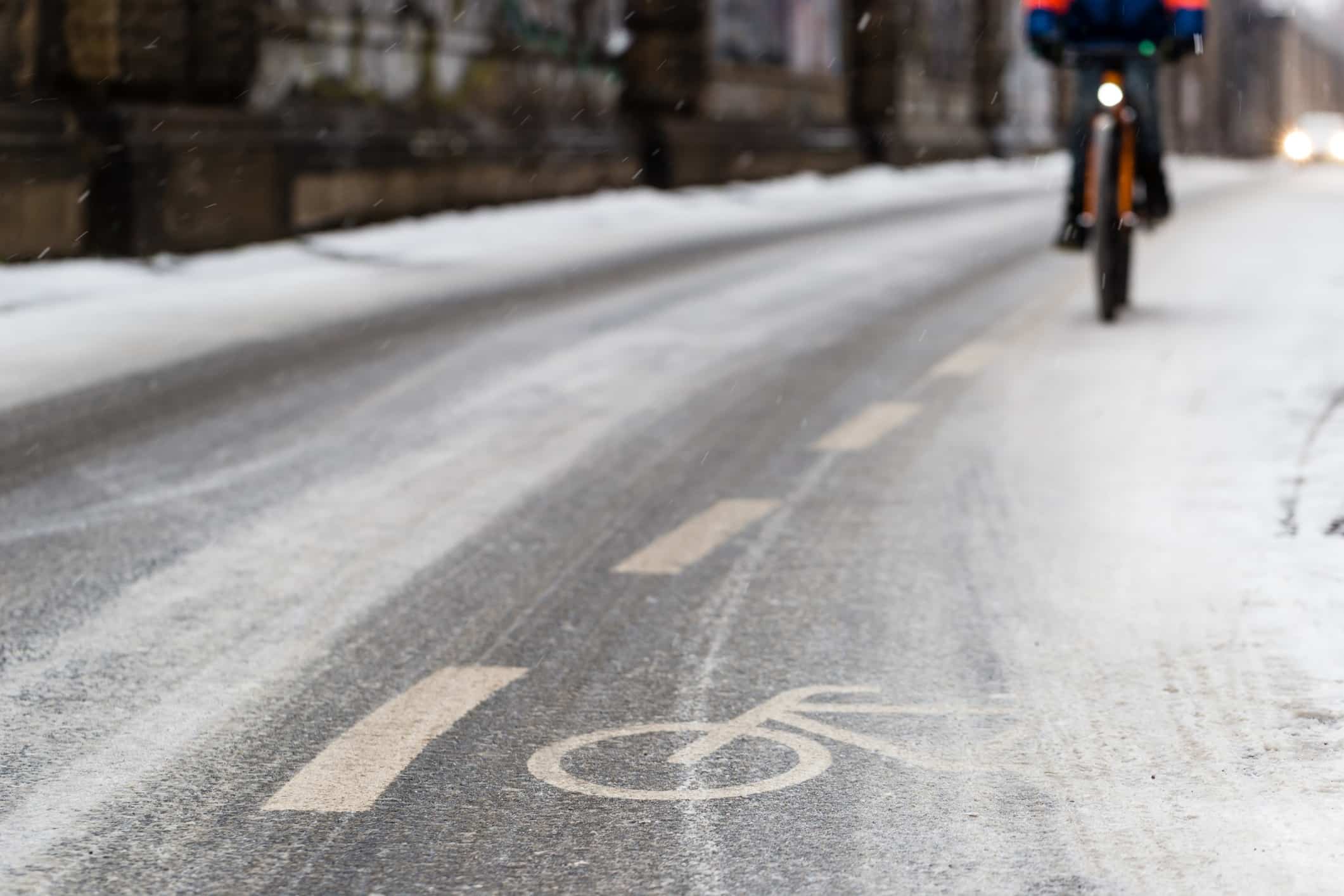Winter will soon arrive, but, despite the colder temperatures and snow-covered roads and bike paths, some cyclists will continue to enjoy the fresh air from the saddle of their bike. If you are one of these hardy souls, there are some important things to consider before braving winter weather.
The first consideration should be your bike. Certain types of bikes are better suited for winter riding. “Fat bikes” with larger tires are best for these conditions.
As winter weather is hard on bikes, you might consider buying a second-hand bike for winter riding, or you may have an old mountain bike stashed away in the garage that you could equip with winter tires. If you intend to ride in snow and icy conditions, you should buy a pair of studded tires.
A properly maintained bike is a safe bike. You should perform a thorough checkup and carry out any necessary repairs prior to the winter. Lower the tire pressure to the lowest level possible without pinching the tire. The proper pressure will depend on your weight, and you may need to experiment a little before you get it right.
Slush and salt cause corrosion and can break down bike components. You should have fenders to keep as much of the slush and salt off your bike as possible. Add fenders to your bike for the winter even if you do not use them in the summer. You should wash your bike after each ride, or, if that is not possible, wipe it down with a dry cloth. Make sure that your bike is dry if you leave it outside.
Some cyclists use WD40 on the bike frame to stop ice and dirt from building up during winter rides. It can also be sprayed on the chain after a ride to remove excess moisture.
While it is important to dress warmly, it is also important to be aware of the risk of overheating. As for all cold weather activity, layer your clothing, starting with a moisture‑wicking base layer.
You may be a little chilly when you start out, but as you ride your body temperature will rise. If you are warm and comfy when you start, you probably have too much clothing on and will become overheated as you ride. It takes a little practice to learn what clothing is suitable for a particular outdoor temperature. Remember you can always add or remove clothing during your ride if you choose clothing which allows you to make adjustments.
Your hands and feet will tend to get cold first. Some cyclists add windproof insulated shells to their handlebars so they can put their gloved hands inside them. This allows the use of lighter gloves as the shells provide much of the warmth. Wearing surgical gloves under your winter gloves creates an extra vapour layer between your skin and clothes. Waterproof cold-weather shoe covers are available in varying degrees of insulation. Having a selection of covers with more than one level of insulation allows you to pick the one best suited for the temperature you will be riding in. Chemical heat packs can be used inside shoes and gloves.
In addition to your usual repair kit, pack extra clothes, including a warm hat, gloves and extra socks in case yours get wet.
You should always wear a bike helmet and ensure that it fits over a toque or hat. There are wind and waterproof helmet covers which are a handy addition on cold windy days. Some winter cyclists prefer to a wear ski helmet and goggles.
If you are taking a water bottle, don’t carry it inside your coat. There are insulated bottle holders which strap around your waist that will prevent your drink from freezing. They are popular with cross country skiers.
Check the weather before you start your ride and make sure that it is going to remain appropriate for your skill level. Be prepared for worsening weather and dangerous surface conditions. If you become concerned about safety, dismount and take alternative transportation to your destination.
Even though winter cycling is becoming more common, some drivers do not expect to see a cyclist on the road. Icy roads can make steering and braking more difficult for both motor vehicles and bikes. Always use separated bike lanes when possible, maintain a safe distance from other vehicles, and adjust your speed to the conditions. Be alert as snow and ice can obscure road hazards.
Biking in winter conditions can be challenging but, by being cautious and well-prepared, you can stay safe while enjoying winter cycling.
This blog post was written by Edward (Ted) Masters, a member of the Disability Insurance Claims and Personal Injury teams. He can be reached at 613-566-2064 or at ted.masters@mannlawyers.com.








